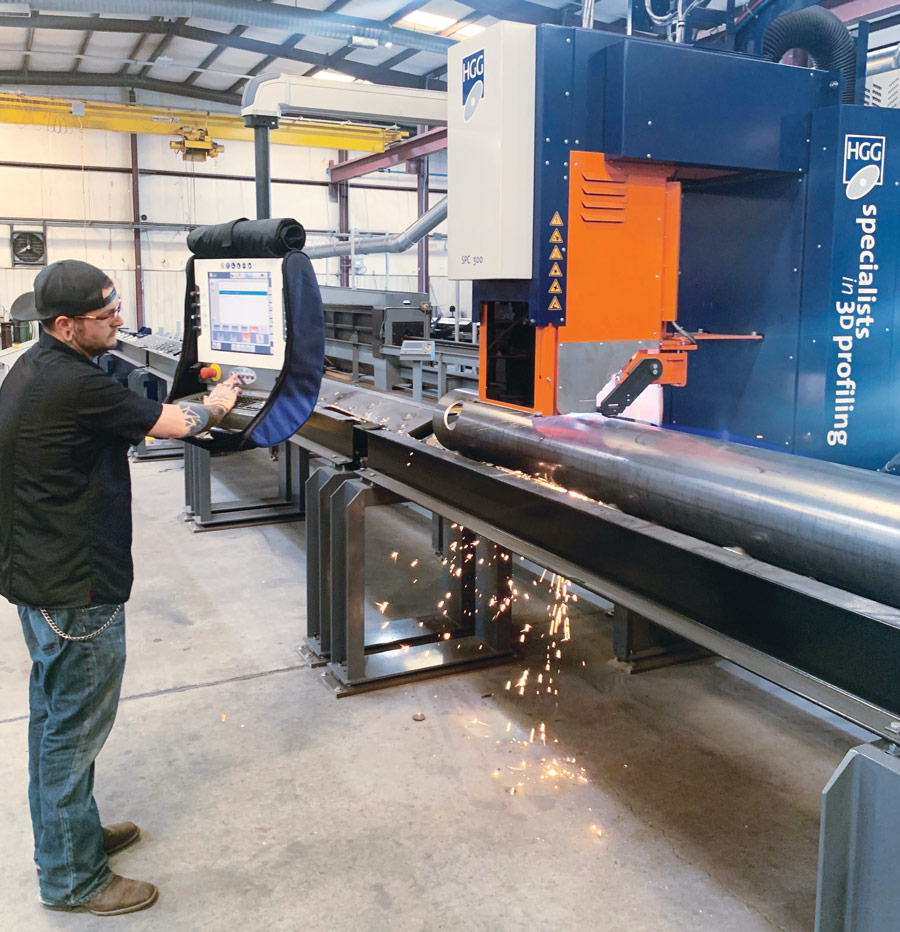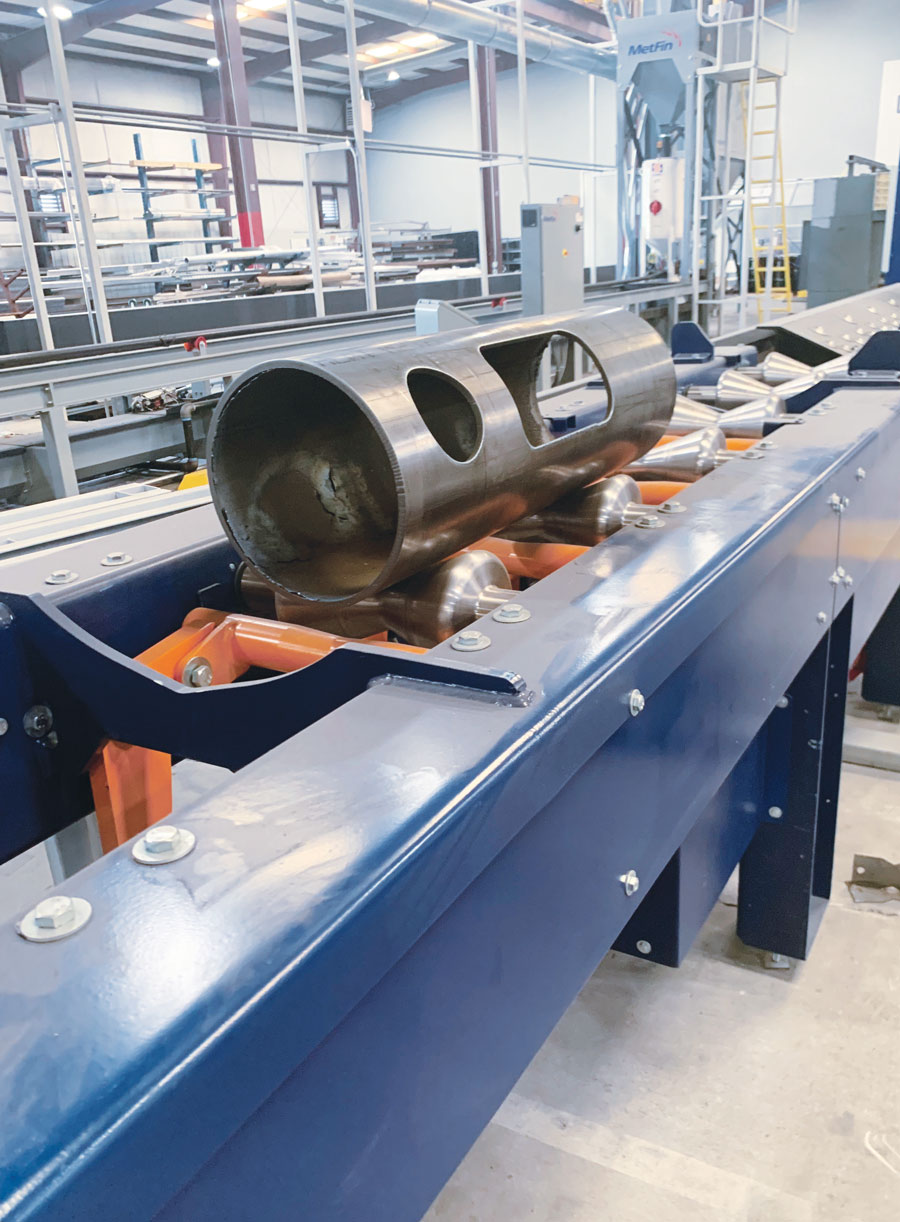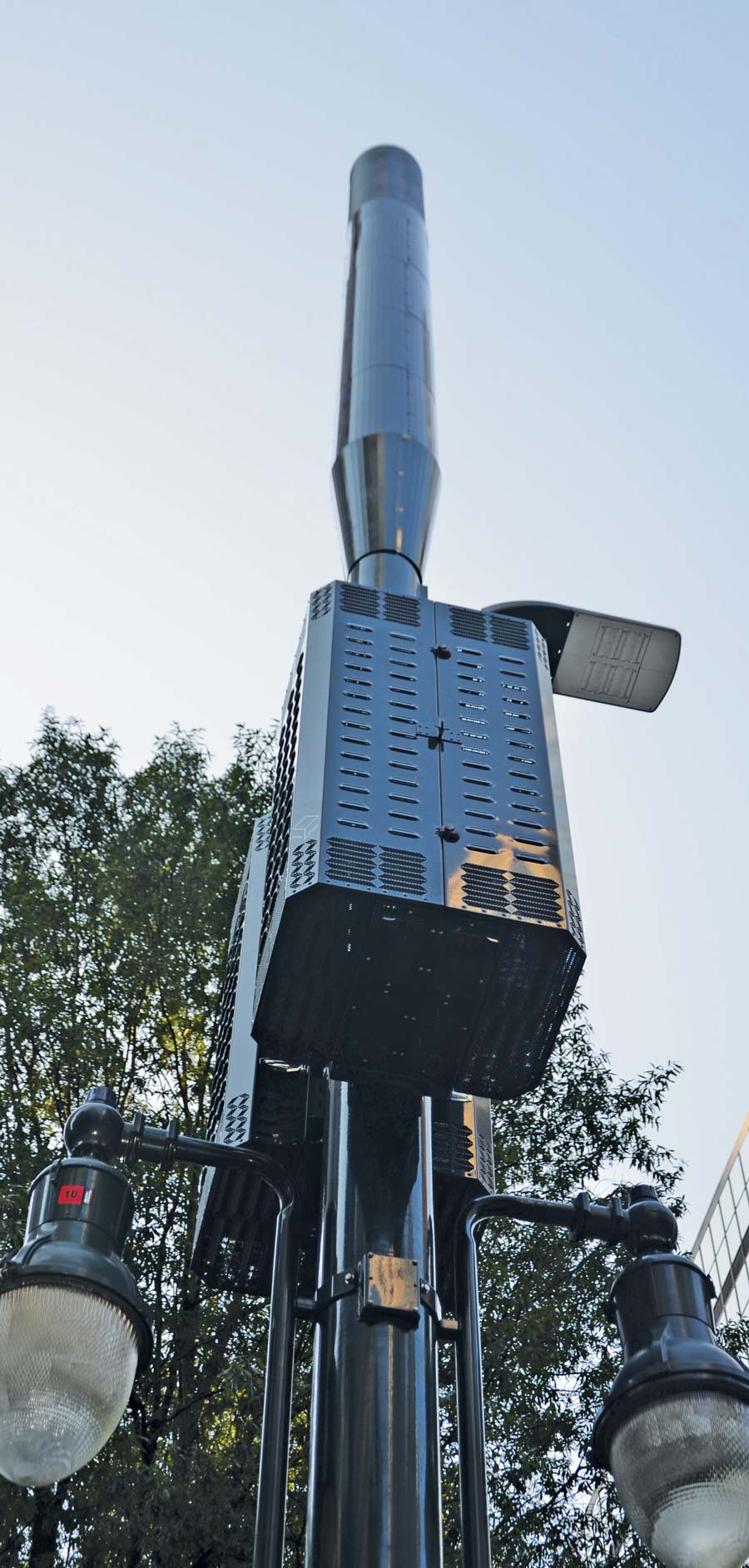GRG Design fabricates poles on its Model SPC 500 R from HGG Profiling Equipment, integrated with a Hypertherm PowerMax 125-amp plasma system.

ltra-fast fifth-generation cellular networks bring bigger channels, lower latency and the ability to connect more devices at once to accommodate every business and household’s thirst for smart technology. According to JP Morgan Research, 5G adoption reached one-third of global smartphone volumes in the fourth quarter of 2020, helped along by the launch of the 5G iPhone and is expected to reach 1 billion subscribers faster than the approximately two years it took for 4G.
And 5G’s potential growth doesn’t stop at the consumer level. JP Morgan analysts assert that the biggest opportunity for the technology is in enterprise-use cases, such as factory-floor automation and fixed wireless.
GRG Design Inc., Gainesville, Georgia, is one of the fabricators helping build this future. “We make 4G and 5G poles out of aluminum, stainless and carbon steel,” says Greg Gonsowski, president. “Wood poles warp over time. If you put an antenna on the top of a wood pole and it warps, the antenna can slip and be pointing in the wrong direction.”
After the pole is built, it needs to accommodate all the wiring and antennas. “We made an enclosure that mounts to the metal pole, the brackets that the antennas mount to on top, and then everything runs inside the pole,” Gonsowski says. “It’s cleaner. If you have a wood pole, all the cabling has to be on the outside of the pole, and it looks terrible.”
GRG is the exclusive fabrication facility for Qube-MRS. The Qube can house any variety of small cell or remote radio units and related equipment from all the main manufacturers. It includes options for 4G and 5G carriers as well as smart city planning and implementation.
“You see our poles around Busch Gardens, downtown Nashville, outside Raymond James Stadium, Hard Rock Stadium, and in Charlotte, North Carolina,” adds Johnathan Anderson, vice president, GRG Design. “Charlotte is one of our biggest customers because they install the poles along a historical street. They had poles that were already there, and they wanted the new poles to match. Amusement parks sometimes have specific requirements, as well, such as a jungle theme. We can make the pole look however they want. The other big companies that make poles don’t want to make one-offs.”


“We’ve gone from a small job shop to an automated manufacturing facility,” he continues. “We still have full CNC machining, laser cutting, press brakes, turret punching. We use as much automation as we can possibly put into the plant.”
To keep up with the demand for poles, GRG installed an SPC 500 RG Stationary Pipe Cutting Machine from HGG Profiling Equipment, which is able to process a wide variety of materials, sizes and wall thickness and comes with oxy-fuel, plasma, marking and CAD/CAM interfaces. Before the SPC 500, the employees in the shop would take a drawing and manually lay out the cuts. Then, they’d call quality control to double-check everything before it was cut. And, for many customers, when the parts are cut by hand, the welds need an extra inspection. “The weld inspectors say that you fit tight to weld easy,” says Gonsowski. “We were having problems with the hand cuts. Going to an automated plasma machine that can make exact cuts made all the welds passable on the first try.”
 An automated plasma machine that can make exact cuts made all the welds passable on the first try.
An automated plasma machine that can make exact cuts made all the welds passable on the first try. 
“It’s outperformed anything we ever thought it could do,” adds Gonsowski.
The SPG 500 also makes it possible to easily accommodate custom one-offs as well as jobs requiring need different heights and layouts. “We can take a SolidWorks file, put it in the machine and have it cut exactly what we need,” says Gonsowski. “The drawing we cut from is the drawing the customer approved.”
GRG Design’s HGG Pipe Cutting Machine also was modified to include an infeed roller conveyor and raw material staging support structure. “We sandblast the inside and the outside of the pipe, and they come off that machine onto the infeed conveyor. We do pipes anywhere from 10 feet to 42 feet long. With the roller conveyor, we don’t have to move anything to adjust for the height or length of the pipe, and we can process pipes of all sizes without touching anything on the machine,” he says.
The automated cuts have allowed GRG Design to eliminate grinding before welding. “It’s changed the way our certified welders weld and the way the welds look,” says Anderson. “And it has sped up the tacking time. It’s a completely different world for them to work in.” “If you’ve ever cut with a plasma torch by hand, it’s difficult to make it perfect,” adds Gonsowski. “Then the welders are having to grind and clean, and it’s hard to make the parts fit perfect. Now, I have a machine operator, and all my welders are welding.”